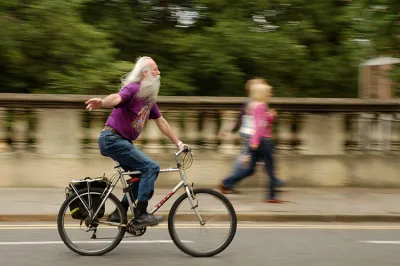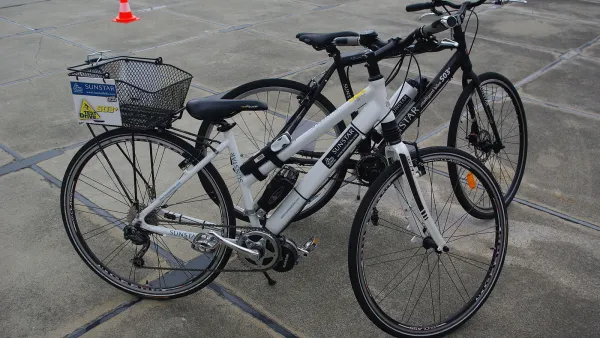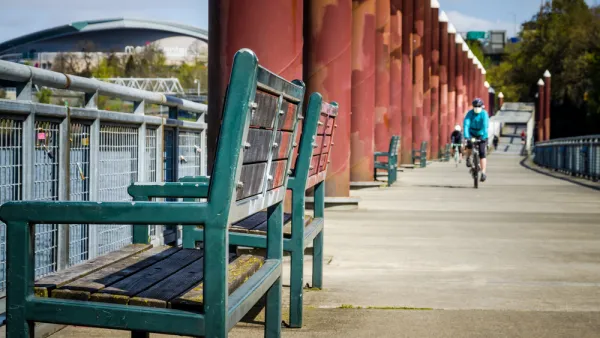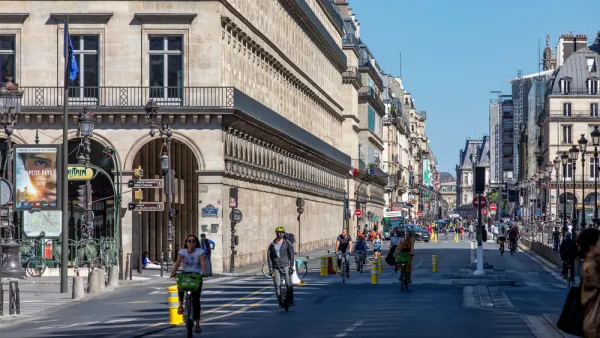With bike sales soaring as people seek out safe outdoor recreation, institutional support and investment can maintain the growth of cycling as commuters start going back to work.

As Americans sought out socially distanced ways to stay active and roads were suddenly cleared of intimidating traffic for much of 2020, bicycling boomed in popularity. In the United States, bike sales grew by 62%, while e-bike sales rose by a whopping 144%. However, writes Andrew J. Hawkins, American roads have also become more unsafe in recent years, with cycling deaths increasing by 38% in the last decade. And the traffic is coming back: after dropping by close to 40% in April, vehicle miles traveled in the United States rebounded to almost-average levels(down only 9% in September compared to the same month in 2019).
To sustain the growth of biking as a mode share rather than a short-lived trend, Hawkins argues that cities must take active steps to improve bike infrastructure and make new riders feel safe on the road. He suggests the federal government can fund programs that direct money toward bike lanes and offer tax credits for bike purchases to incentivize consumers, while cities can expand upon pandemic-prompted "slow streets" programs and temporary bike and pedestrian improvements. "It will be a turf war, as bikes will need to take physical space away from cars to maintain any forward momentum," Hawkins predicts, but the advances of 2020 gave us a glimpse into a world where two-wheeled transportation gets serious institutional support.
FULL STORY: How to keep the bike boom from fizzling out

National Parks Layoffs Will Cause Communities to Lose Billions
Thousands of essential park workers were laid off this week, just before the busy spring break season.

Retro-silient?: America’s First “Eco-burb,” The Woodlands Turns 50
A master-planned community north of Houston offers lessons on green infrastructure and resilient design, but falls short of its founder’s lofty affordability and walkability goals.

Delivering for America Plan Will Downgrade Mail Service in at Least 49.5 Percent of Zip Codes
Republican and Democrat lawmakers criticize the plan for its disproportionate negative impact on rural communities.

Test News Post 1
This is a summary

Test News Headline 46
Test for the image on the front page.

Balancing Bombs and Butterflies: How the National Guard Protects a Rare Species
The National Guard at Fort Indiantown Gap uses GIS technology and land management strategies to balance military training with conservation efforts, ensuring the survival of the rare eastern regal fritillary butterfly.
Urban Design for Planners 1: Software Tools
This six-course series explores essential urban design concepts using open source software and equips planners with the tools they need to participate fully in the urban design process.
Planning for Universal Design
Learn the tools for implementing Universal Design in planning regulations.
EMC Planning Group, Inc.
Planetizen
Planetizen
Mpact (formerly Rail~Volution)
Great Falls Development Authority, Inc.
HUDs Office of Policy Development and Research
NYU Wagner Graduate School of Public Service





























